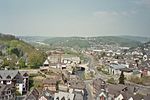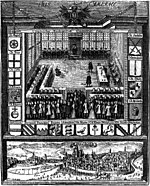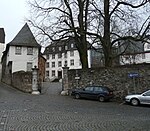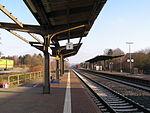Schöffengrund
Lahn-Dill-KreisMunicipalities in Hesse

Schöffengrund is a municipality in the Lahn-Dill-Kreis in Hesse, Germany.
Excerpt from the Wikipedia article Schöffengrund (License: CC BY-SA 3.0, Authors, Images).Schöffengrund
K 370, Schöffengrund
Geographical coordinates (GPS) Address Nearby Places Show on map
Geographical coordinates (GPS)
| Latitude | Longitude |
|---|---|
| N 50.483333333333 ° | E 8.4833333333333 ° |
Address
K 370
35641 Schöffengrund (Niederwetz)
Hesse, Germany
Open on Google Maps










